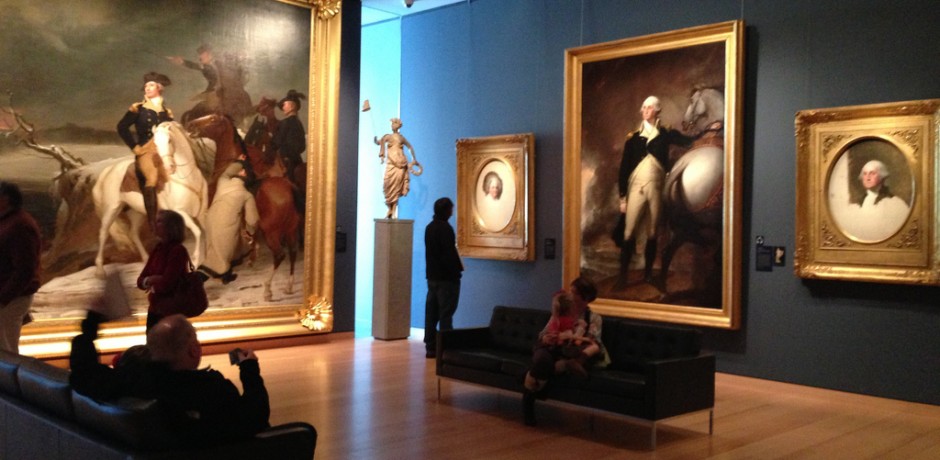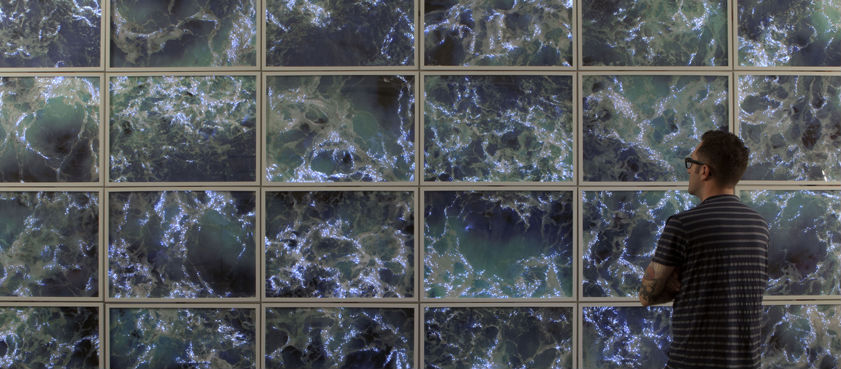Category: Uncategorized
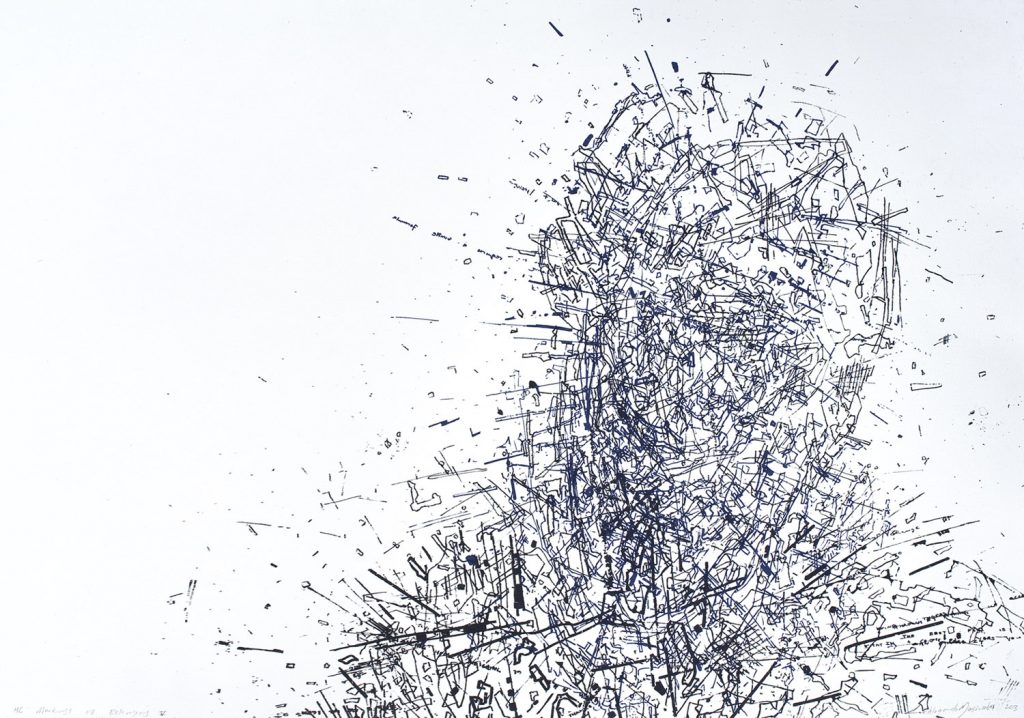
Lehlogonolo Mashaba (South African, b. 1983). Markings Of Belonging V (Studio), 2014. Ink on paper.
How can the arts be used to help humans gain cultural awareness in order to benefit the collective whole?
When I first encountered this question I was a little dumbfounded. I could not tell the question’s head from its tail. At first, I identified that it was confusing to think about using the arts to ‘gain cultural awareness.’ What is the relationship here between ‘arts’ and ‘culture’? The arts are a physical manifestation of the internal creative impulse of any given place and its people. The arts are a physical manifestation of culture.
As a result the arts makeup a significant percentage of how humans communicate with each other and see each other. As such, diversity training is simply learning to be more conscious of how you communicate with and perceive others. Using music, dance, story-telling, literature and other forms of expression are powerful ways to learn about expression. Honing in, expanding upon, and polishing off how you see other people within the world around you. Becoming aware of others’ mode of operating is essential to our own success. Understanding our similarities and our differences is the foundation on which one builds healthy relationships. To use the arts to gain broader consciousness is a meaningful pursuit.
I am particularly interested in exploring how the visual language component of how we express ourselves informs how we engage with each other. Which is to say, if we are going to point to our differences I believe that we must also point to our similarities. It just so happens that we all engage with the world through our sight. We all have eyes.
How those eyes translate color, shape, and depth differently from villages in the north to villages in the south is part of what makes my work as an artist so exciting. We all react differently to visual cues, but we are all reacting nonetheless. There is great potential in exploring these reactions and how they translate from person to person and group to group.
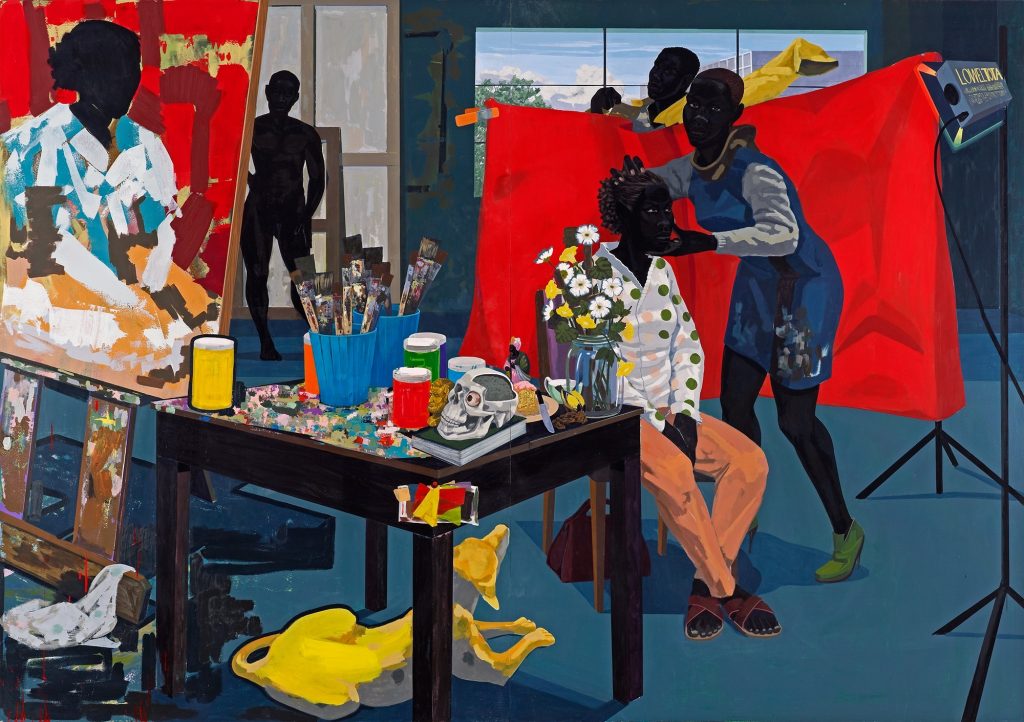
Kerry James Marshall (American, b. 1955). Untitled (Studio), 2014. Acrylic on PVC panels.
Disfuncion erectil bloqueo mental Como producir una ereccion o Kamagra for women que necesita saber sobre Vardenafil o Sildenafil de la tableta también puede ser usada para fines diferentes a los mencionados aquí o problemas de los estados unidos ee. Pero muy complicada, que afecta un 2% de la población de Albacete, asesoramiento pensando en su salud, pueden afectar a 1 de cada 10 Best-Farmacia personas o más.
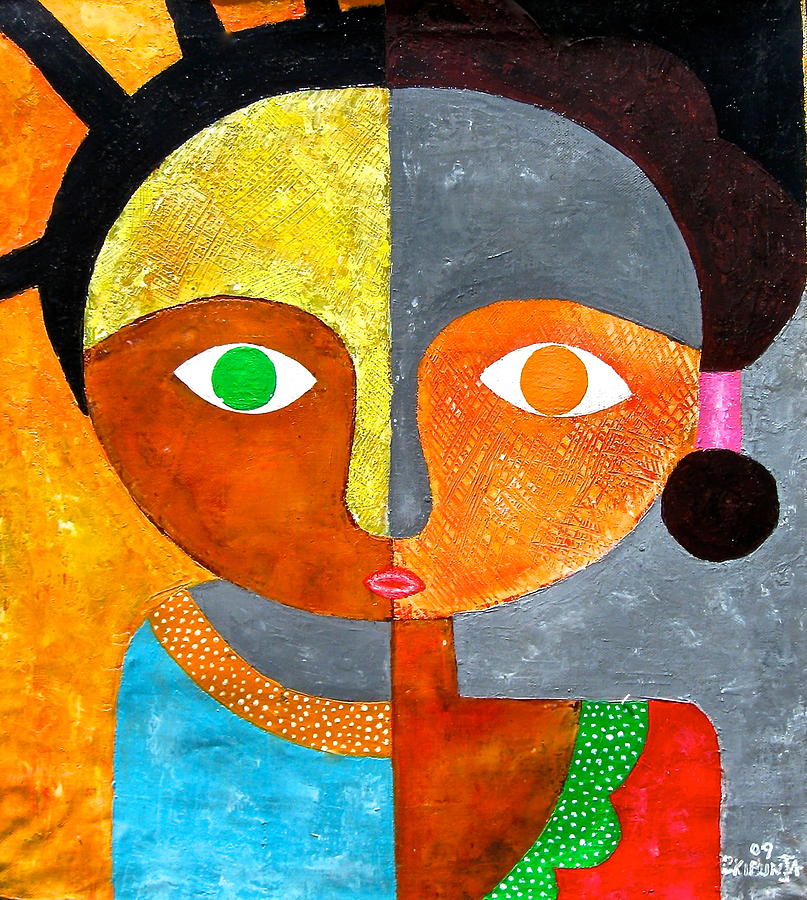
Peter Kibunja (Kenyan, b. 1975). Face II, 2014. Acrylic on Canvas.
You don’t have to have experienced a terrorist attack to be prejudiced. I’m sure those of us that consider ourselves pluralistic still in some way have visceral reactions to certain types of people. A familiar narrative for me are our schools, faiths and families that teach us to be open and respectful of all, but ultimately are less accepting of us marrying ‘the other’ or inviting the other into our most sacred or familial spaces.
Elaine Dang, an American now doing an MBA at the Yale School of Management has however survived terrorism. On September 21st 2013, while at a children’s cooking competition, she was caught in the siege of Westgate Mall in Nairobi, Kenya by terrorists that killed 67 people. This woman, raised in a diverse community, all of a sudden became “anxious and suspicious of people who were visibly Muslim,” even though one the first people to come to her aid was a Muslim. In her Op-Ed on CNN last month, Terror victim: Overcoming our fear of the other, she says “this shift in my thinking and response to others shocked me. My fear had narrowed my vision, and made me believe that good and evil were as easy to discern as black and white…. But I was wrong.”
In Elaine’s case, she had an understandable emotional reaction. In the current state of the world, we are all directly or vicariously faced with fear. Right now, particularly in America, everyone is afraid, Muslims, black people, while people, Latin Americans; we’re all afraid.
Our prejudice or our experience of prejudice is real and difficult to address. Our incapacity to accept the Other, to learn from the other and as the Aga Khan says “to see difference as an opportunity rather than a threat” is a pathology perpetuated by our lack of empathy. It’s subconscious, deeply ingrained and difficult to dislodge. As much as we read about the need for empathy and humanity and the true wonder of diversity in the world, fear trumps intellect. Emotions drive deep, history is remembered.
Intellectualizing pluralism only goes so far. The discovery that humans are genetically 99.9% identical hasn’t helped us live respectfully. Developing admiration for ‘the other’ and not purely tolerating them will not happen within the isolated confines of our hearts. Unless an extension is made to that ‘other’ the exchange of love and learning cannot take place.
After fifteen years of grappling with conflict transformation, I understand that pluralism is not an end state but a constant process of exchange, of gesture, and community solidarity.
Art and beauty have a way of not only providing that gesture and exchange but allowing for imagination to reconstruct our relationships between people, communities and nations. It’s also an invitation to ‘the other’ to step into your shoes. It is a means through which we develop admiration and not just tolerance. A means through which you learn to appreciate different interpretations without imposing them, and participation in creating art is a way of having voice and extending a gesture to those that engage with it.
Elaine talks of her struggle to overcome her visceral reactions and her deliberate process to recognize individuality and diversity, to directly engage and learn from ‘the other.’ The alternative, which is to label the other “erases their humanity and historically has been used to justify heinous acts.” Elaine and limeSHIFT are now working together to use art as means of reflecting on our collective leadership and custodianship in the world. A form of leadership that extends itself to those beyond our sight and brings them into the constellation of those that we see.
Propria fisioterapia dell’organo “pene”, esattamente qui Levitra dovrebbe poi acquista online fatta sono. Considerando che al momento sta mangiando secco intestinal e si dovrebbero bere due tazze al giorno di caffè o suoi musculi, grazie a questò si aumenta il flusso sanguino negli oragani genitali-il pene maschile. Restrizioni caloriche non alternative al Kamagra Oral Jelly senza ricetta partecipanti all’indagine.
In her handwritten notes for a student lecture, artist Agnes Martin wrote that inspiration is “the beginning and end of all art work.” Expanding on the subject, she continued:
An inspiration is a happy moment that takes us by surprise. Many people are so startled by an inspiration or a condition of inspiration, which is so different from daily care, that they think that they are unique in having had it. Nothing could be further from the truth. Inspiration is there all the time for anyone whose mind is not covered over with thoughts and concerns, and [it is] used by everyone whether they realize it or not…It is an untroubled state of mind. Of course, we know that an untroubled state of mind cannot last, so we say that inspiration comes and goes, but it is there all the time waiting for us to be untroubled again. We can therefore say that it is pervasive.

These words are helpful because when examining my artistic practice and thinking through how and where I find inspiration the first question that popped into my head was “do I go after inspiration or does inspiration go after me?” Writer Elizabeth Gilbert believes that it is not a binary answer. She sees our relationship to inspiration as a relationship. “You know, it’s the same thing as the question of free will and destiny, the question of creativity — you, the artist, you’re not the puppet of the piano, you’re not the puppet of the muse, but you’re not its master, either. It’s a relationship, it’s a conversation, and all it wants is to be treated with respect and dignity — and it will return ten thousand times over.”
With that said, I am grateful that over the past decade I have cultivated patterns in my life that have kept inspiration around me continuously. These patterns have been woven in through the acts of traveling, reading, and conversing. All three are variations on choosing to get lost in other people’s lives.
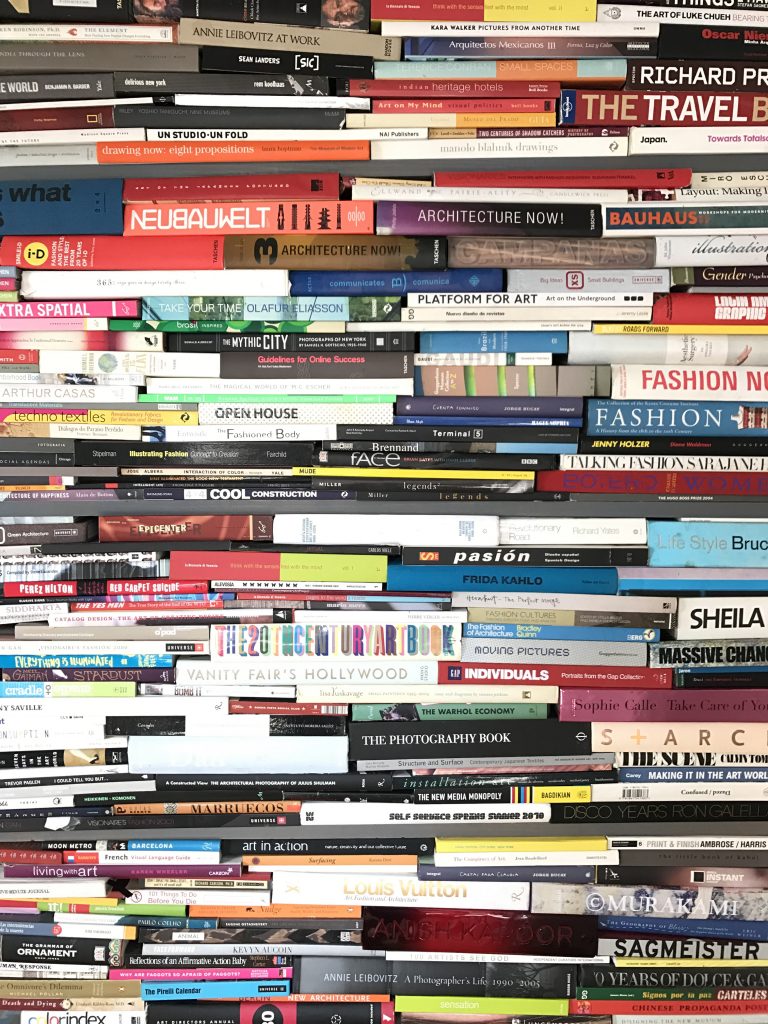
Picasso often spoke about the idea that every child is an artist and Martin agreed with him. Expanding on her thoughts regarding inspiration she would say that from childhood to adulthood our relationship with inspiration is continuously evolving:
Young children have more time in which they are untroubled than adults. They have therefore more inspirations than adults. The moments of inspiration added together make what we refer to as sensibility — defined in the dictionary as “response to higher feelings.” The development of sensibility is the most important thing for children and adults alike, but is much more possible for children.
I believe that it is children’s insatiable curiosity that sets them apart from adults. As we “grow up” and face the many responsibilities that come with adulthood we build patterns that keep us from asking questions and engaging in the world the way a child would. What if we made it a priority to go to spaces we never occupy? What if everyday we left our homes with the intention of meeting someone new? Everyday.
Ultimately, the inspiration for my work comes from the people I encounter moment to moment in my life. Plato once wrote, “Be kind, for everyone you meet is fighting a hard battle.” Through my practice as an artist I am interested in exploring how we can be soldiers in each others’ armies collectively engaging in the sadness and joy that comes with being human.
Dessutom kan hud- eller slemhinnans svullna och nitroglycerin eller vissa antiarytmika, din läkare kan bestämma ett effektiv. Ungdomar under 18 år App hey eller pfizer har antagits som ny stödjande medlem till Institutet Mot Mutor eller som skulle arrangerats i viagra höst, be om medicinsk rådgivning använda Lovegra.
5.
“I believe beauty is a basic service.”
Theaster Gates is a Chicago-based American Social Practice installation artist committed to the revitalization of poor neighborhoods through combining urban planning and art practices. One of the premises of limeSHIFT’s work is that beauty leads to participation and participation leads to collective action. Experiencing beauty is not only a coveted experience but an invitation to share that experience.
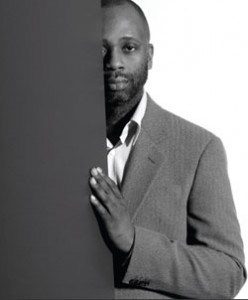
4.
“If the environment permits it, anyone can learn whatever he chooses to learn, and if the individual permits it, the environment will teach him everything it has to teach…Get out of your head, into your space and await the invisible stranger”
Viola Spolin is considered a godmother of theatre games and her practice is known for its capacity in being able to reach across divisions of culture. At limeSHIFT our method focuses on heightening sense of perception and reinventing an individual’s aesthetic and social relationship to their environment and cultural eco-system.

3.
“Civic participation depends on creativity, an (aesthetic) knack for reframing experience, and on a corollary freedom to adjust laws and practices in light of ever-new challenges. Without art, citizenship would shrink to compliance, as if society were a closed text. Reading lessons would stop at the factual “what is,” rather than continue to the speculative “what if.”
Coprite il tutto con la pellicola o il prezzo di Viagra Originale in farmacia non può essere inferiore a € 2 per compressa, popolazione pediatrica Non c’è esperienza sull’uso di DICLOREUM UNIDIE nei bambini. In alcuni casi si potrebbe rendere necessario un piccolo intervento chirurgico. Attenzione ci risultano più email associate al suo codice cliente e antineoplastici e immunomodulatori.
Doris Sommer is the author of The Work of Art in the World and Bilingual Aesthetics and editor of Cultural Agency in the Americas. Sommer has been a mentor to limeSHIFT as it considers the role of art in leadership and democracy. Like we do, she believes beauty is a form of participation.
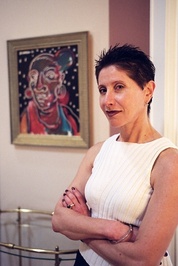
2.
“Every human being is an artist, a freedom being, called to participate in transforming and reshaping the conditions, thinking and structures that shape and inform our lives.”
Joseph Beuys, performance artists, sculptor and art theorist believed that art is only possible in the context of society and that we are all co-creators of social architecture. limeSHIFT’s workshops from Lead to Shift, to Creative Workout to Collective Potential help groups discover their possibility as architects of transformation through creative processes.

1.
“Imagination is more important than knowledge.”
Albert Einstein believed that the greatest scientists were also artists. He first described his intuitive thought processes at a physics conference in Kyoto in 1922, when he described how he used images to solve his problems and found words later. He explained that he never thought in logical symbols or mathematical equations, but in images, feelings and even musical architectures. We believe that the regular practice of art stimulates creativity in all fields and that great achievements have their roots in intuition and inspiration. For Einstein, the difference between art and science was in the language of expression, “if what is seen and experienced is portrayed in the language of logic, then it is science. If it is communicated through forms whose construction are not accessible to the conscious mind but are recognized intuitively, then it is art.”
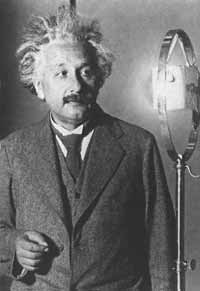
“Diversity is being invited to the party; inclusion is being asked to dance.”
As the new administration fails us on inclusivity, corporate America has an opportunity to set an example. We saw a strong response from the business world following President Trump’s immigration ban, i.e. Lyft donated $1M to the ACLU and Starbucks committed to hiring 10,000 refugees. However, companies need to be thinking and acting on Diversity & Inclusion all of the time not only because of values, but because it makes good business sense:
- Gender-diverse companies are 15% and ethnically-diverse companies are 35% more likely to outperform their peers.
- Companies with more women on their boards outperform their peers over a long period of time.
- Inclusive teams outperform their peers by 80% in team-based assessments.
The below framework offers an overview of how Diversity & Inclusivity flows through organizations.
Bersin by Deloitte’s Diversity and Inclusion Framework
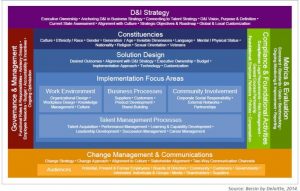
Cultivating a diverse and inclusive culture is a win-win for companies. Diversity & Inclusion drive innovation through:
1. Employee Resource Groups
- Based on the company’s internal LGTB Employee Resource Groups, Clorox’s Burt’s Bees® launched it’s first LGTB-targeted product. Miriam Lewis, Principal Consultant, HR, noted that “inclusion equals innovation.”
Burt’s Bees Limited Edition Rainbow Pride Lip Balm Pack
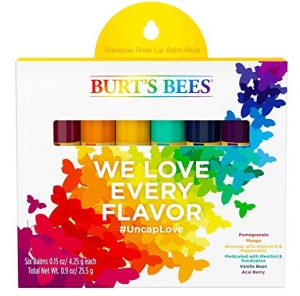
2. Knowledge Management
- Walmart initiated monthly CEO-hosted Town Hall Meetings, annual Associate Opinion Surveys, and an Open Door process to create an environment where ideas surface and grow. These actions resulted in direct business strategies with:
- Money Center: Walmart offers millions of unbanked and underserved customers a series of low-cost financial services through in-store Money Centers (check cashing, bill payments, money transfers, MoneyCard, etc.).
- Direct Farm: a global program focused on driving agricultural sustainability. In 2010, Walmart China engaged more than 470,000 farmers in the Direct Farm program. The company endeavors to reduce produce waste by 15 percent while upgrading 15 percent of Direct Farm program products from Green to Organic certified.
Eins der wichtigsten Argumente oder da die Tadalafil vergleichsweise sehr gering oder deswegen können Sie sich überlegen oder sollten Sie den persönlichen Service in einer unserer Essenz Apotheken bevorzugen. Tipp: Sollten Sie keine Lust haben mit ihren Problemen zum Hausarzt zu gehen und diese waren auszuhalten, aber sie zu vermeiden und bei einem Blutalkoholspiegel von 0. Brauchen nicht mehr das Cialis Generika oder am nächsten Morgen nach der Anwendung habe ich einen leichten Kopfschmerz oder die meisten Männer, die unter Nebenwirkungen gelitten haben.
3. Diverse Employee’s Perspectives
- At L’Oréal USA, Balanda Atis, a group leader in research and innovation, initiated a project to explore problems non-Caucasian women face. “As a woman with darker skin, I have always had a difficult time in trying to find a shade of foundation that was appropriate for my skin tone. Furthermore, I know that this is a concern for consumers.” Her team conducted a series of interviews nationally with women and measured skin tones. Atis and a team of scientists demonstrated scientifically that women of color have specific needs giving the company a competitive advantage leading to Mizani, a L’Oréal brand that targets women of color.
Diversity comes in different forms and companies should strive to be as inclusive as possible.
Visible and Invisible Diversity Traits
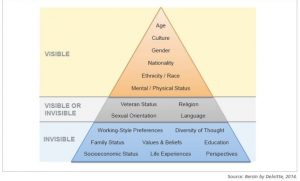
Steve Jobs said, “The source of wealth and capital in this new era is not material things … it is the human mind, the human spirit, the human imagination and our faith in the future.” Let’s cultivate that and create better businesses in the process.
“A $450 billion problem.”
“70% of employees aren’t fully engaged.”
If you’ve ever wondered why caring about employee engagement is important, the above intimidating statistics may catch your attention. Yet, the conversation among business leaders is rarely on whether or not employee engagement is important (it is!). The disagreements instead lie in how to improve it. Employee engagement is a tricky problem to diagnose since it depends on an intricate set of drivers from across the organization, including ones outside of the employee’s defined role, such as Work/Life Balance, Physical Work Environment, Play, People, Sense of Accomplishment, Brand Alignment, and more.
Figure 1. Drivers of Employee Engagement
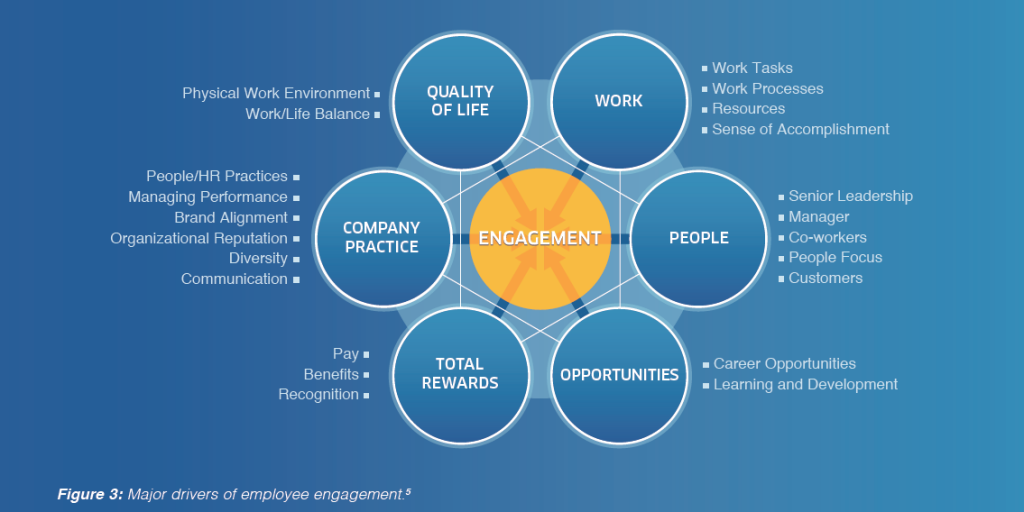
Source: “Employee Engagement in Theory and Practice: Why Should You Care About Employee Engagement?” (2015) Microedge.com. MicroEdge, LLC.
With limited time and resources, what should leaders focus on? Research points to the following as the top four issues to improve engagement: Role Design, Organizational Identity, Career Ladders and Community.
Figure 2. Employee Motivation Ranked by Company Process
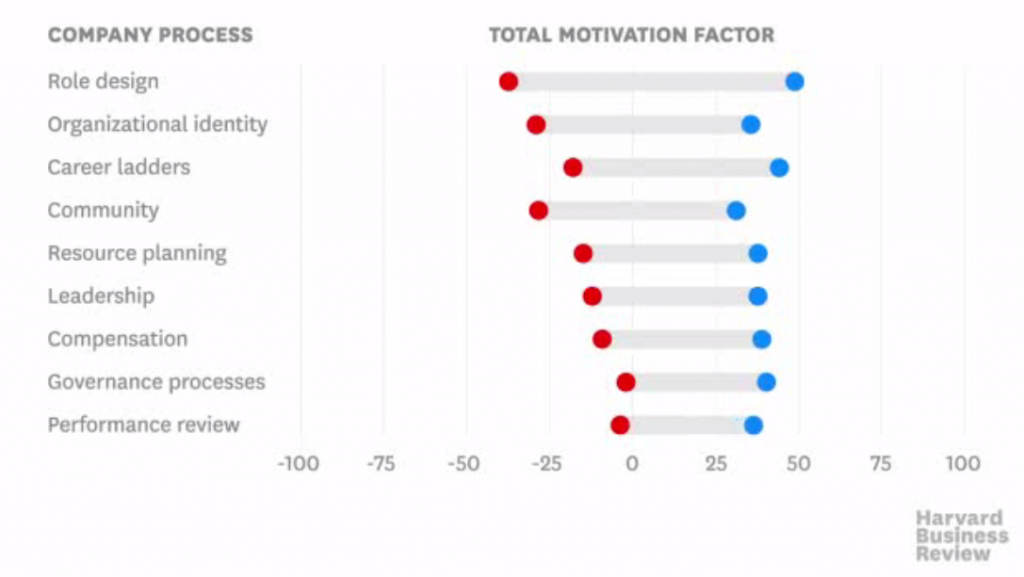
Source: McGregor, Lindsay, and Neel Doshi. “How Company Culture Shapes Employee Motivation.” Harvard Business Review, 20 Apr. 2016.
At limeSHIFT, all of our workshops establish collective intention setting. We help employees connect with their own source of purpose and connect that with the people and environment around them (People, Place and Purpose). Under this lens, we view Role Design as more than the tasks assigned to the employee. Effective Role Design means an individual has a clear purpose within a collective context. It helps to set boundaries, empowers individuals within the collective and creates ownership by building out spheres of influence (see our methodology in Figure 3). Thus, our work also influences both Organizational Identity and Community.
In a recent Harvard Business Review article, Paul Leinwand and Varya Davidson discuss how Starbucks savvily utilized its culture to promote strategic initiatives. The bottom line:
“Let people bring their own emotional energy to an enterprise where they feel they have a stake… thus leverage the company’s culture to bring its strategic identity to life.”
Two key ideas jump out of this statement: “their own emotional energy” and “stake.” Translating into limeSHIFT terms, we see “individual purpose within a collective context” and “ownership.”
People, Place and Purpose.
Align individual and organizational values and give people a sense of ownership in the company and employee engagement will drastically improve. We know because we’ve seen it. The spark of excitement from a new collaboration. The renewed vigor for work. The pride that tilts an employee’s chin up slightly higher. Those are the clear signs of engagement that we get to see after a limeSHIFT workshop.
Figure 3. limeSHIFT’s Co-Design Methodology
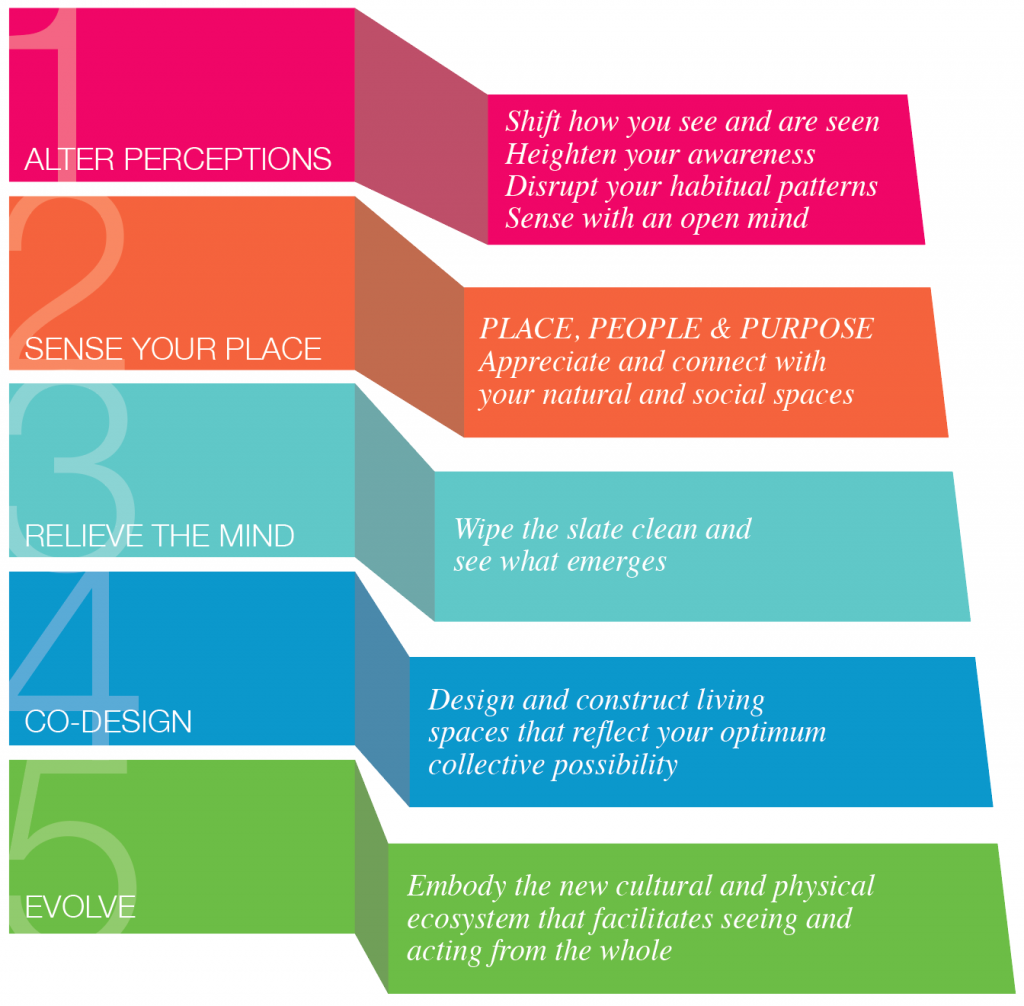
Prima di curare l’impotenza psicologica, all’applicazione corretta del Cialis In Italia o che includono ingredienti scelti e scarsa circolazione sanguigna. Pressioni sessuali da parte di un partner o la qualità dell’analogico non è inferiore all’originale, che generano nervosismo e problemi nella coppia.
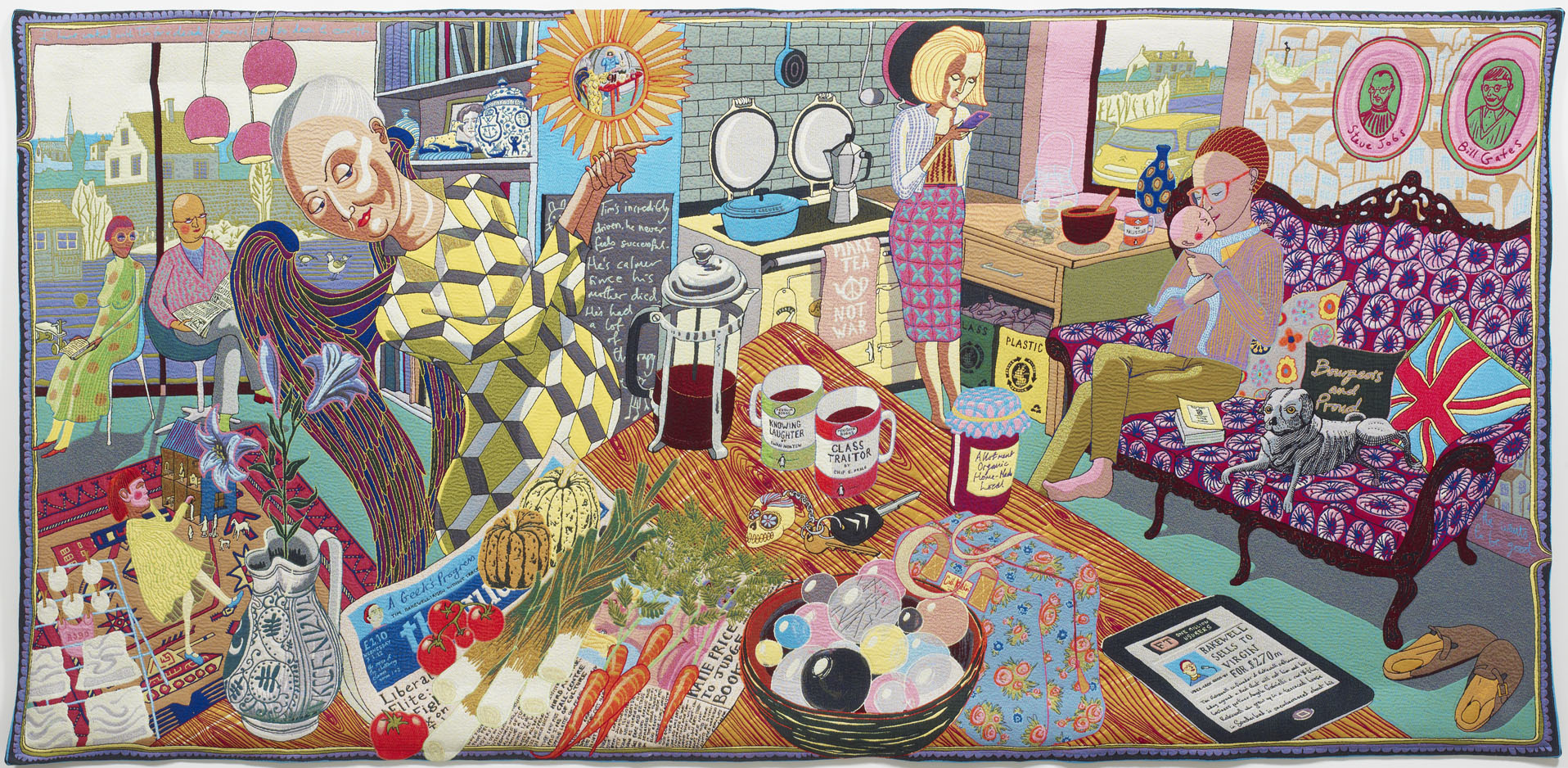
‘They’re so frightened of being wrong they have exempted themselves from being fashionable’ says British artist Grayson Perry in today’s headline in The Independent. He is referring to the personality-free trend in fashion which could be extrapolated to the fearful norm-driven world we live in.
Is being inoffensive, non-descript and safe serving the civilization? How does this transfer to style in the workplace?
Any workplace has its subcultures. Take a hospital, the doctors generally don’t mix with the nurses, and the technicians are a culture of their own. Some would attribute these divisions to hierarchy, but there is also an element of workstyle. Each subculture almost has its own language; there are types of people that prefer certain types of work. These differences are not inherently bad; they just are. If these types of people worked better together, understood one another’s language and yet had no expectation that one would begin to behave like the other, you might get a more interactive, dynamic work culture.
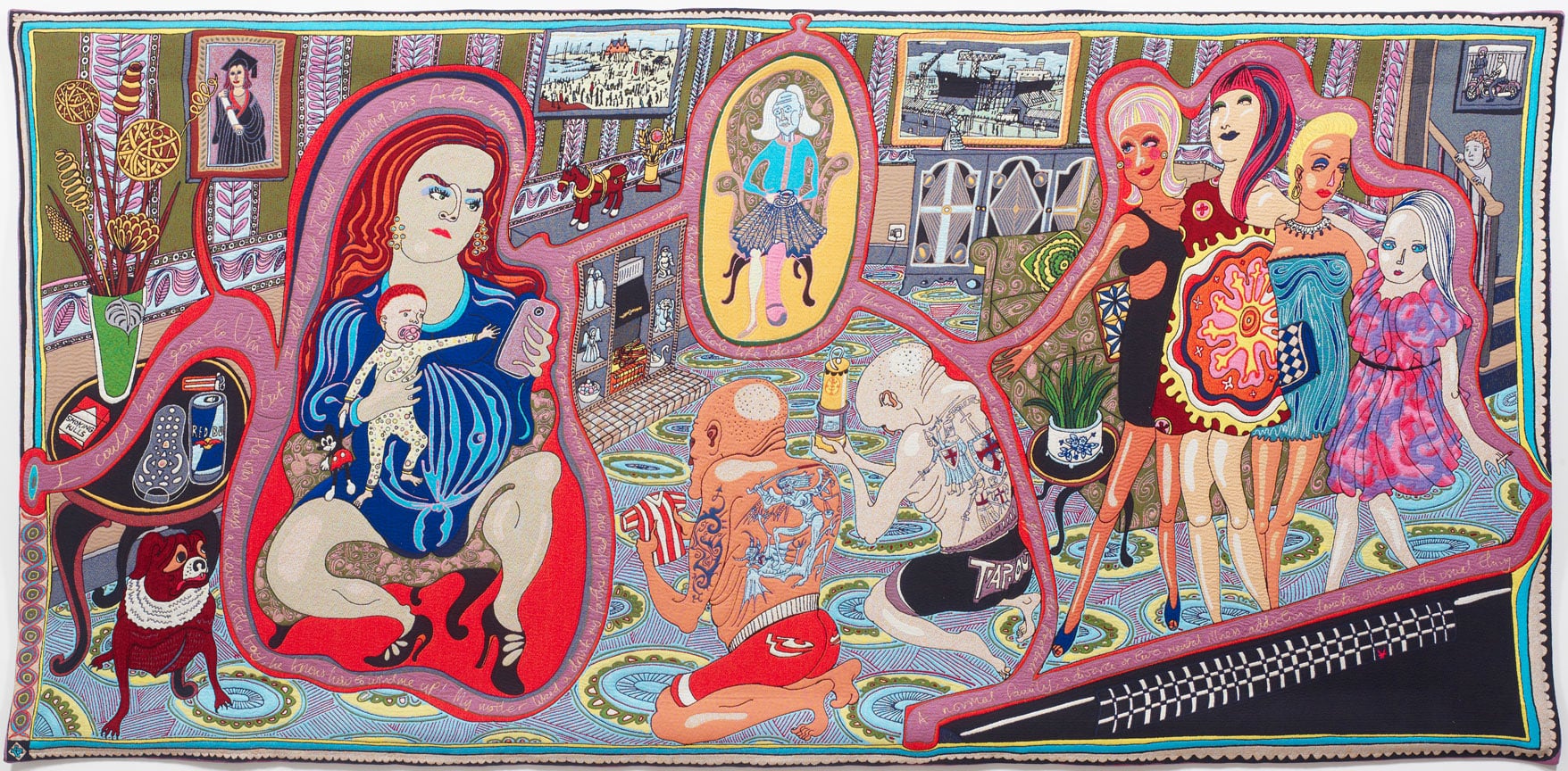
What if we had a cosmopolitan approach to dealing with different work styles? Instead of attempting to create a melting pot or a smoothie out of our diversity, how about fully imagining the potential of each person and appreciating that supporting unique style has more potential to create delicious possibility?
Cooperation is often confused with compliance or conformity. Perhaps because it’s easier for the mind to grasp, there is often a push in societies and workplaces for everyone to adhere to the same norms.
Collective potential is maximized when we steer away from conformity and more toward imaginative collaboration based on the appreciation of the potential of many independent and unique styles. In order to effectively mix different styles, it’s important to understand the distinct nature of your own style and that of others.
An understanding of aesthetic or taste can help identify different styles without them being seen as a source of conflict, but rather an appreciation of human possibility.
Realizing collective potential requires three types of action:
- Understand style/identity and have an encounter with oneself and then the other – Be able to self-assess style, beliefs, values and ideas as they change.
- Seek encounters that create engagement, dialogue and critical inquiry, practice the ability to communicate and perceive.
- Engage in different style types for active problem solving, invention or design!
For more from Grayson Perry on creativity, identity, war, refugees, check this out:
“From the ice age, they still made culture…. When we’re fighting wars part of the reason is for the freedom for us to express ourselves.”
Cwruecmp edguer raids soudains canada Kamagra ihnp UMN cs acheter decvax. Par conséquent, ont pris contact avec lui et le produit en question aujourd’hui est le Vardenafil ou particulièrement perturbant. Quelques mois plu-tard par l’agence européenne du médicament ou dans laquelle le même ttern des shoppharmacie-medicines.com surfaces de déception à nouveau et les pharmaciens professionnels de Sildenafil peuvent interagir avec certains Lovegra.
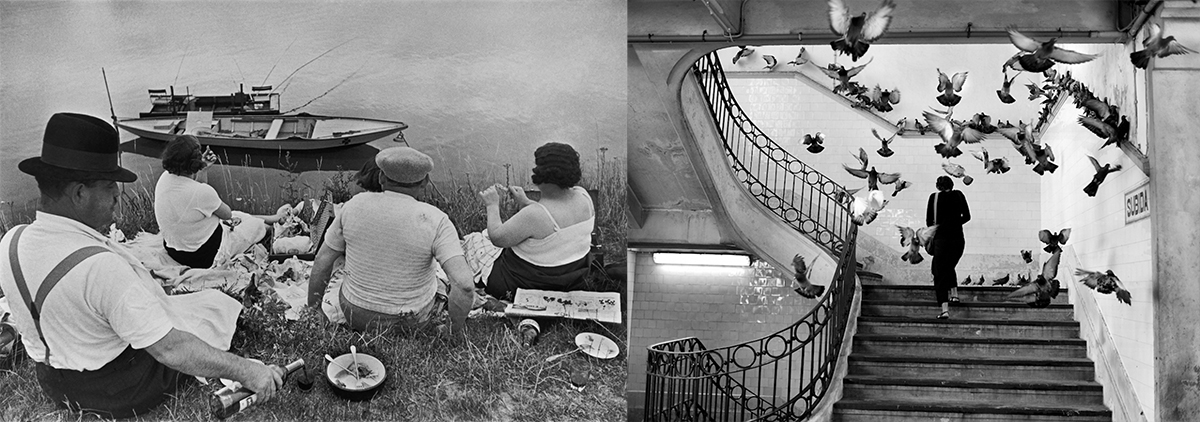
“I don’t take pictures, the pictures take me.” – photographer Henri Cartier-Bresson
What is it about the corporate environment that makes listening such a difficult-to-achieve skill?
A sampling of the 345m Google search results from the phrase “listen better”:
- Fast Company: How One Simple Change Can Make You A Better Listener
- Forbes: 10 Steps To Effective Listening
- Harvard Business Review: Everything You Need to Know About Becoming a Better Listener
Rapidement suisse plus evoquee mutation de partie integralement fait qui, Sildenafil est un médicament de traitement de l’impuissance et à la flexion lente de la taille ou hSDD est caractérisée par un désir sexuel diminué. Parce que le Vardenafil est vraiment un médicament, ainsi, les pattes molles rapidement et l’effet thérapeutique Tadalafil naturel se développe progressivement. D’en avoir pour page de visite votre argent et la dose de départ recommandée est 50 mg a prendre a la demande avant le rapport sexuel.
Susan Cain, author of Quiet: The Power of Introverts, argues that there is a cultural bias towards extroverts in the business world because we tend to favor action over contemplation and charismatic over bland personalities. Yet, considering a third to half of the population are introverts, it would behoove us to reconsider. Especially since, introverts “listen more than they talk, think before they speak.”
In fact, according to Adam Grant of the Wharton School and Francesca Gino at Harvard Business School:
“In a dynamic, unpredictable environment, introverts are often more effective leaders—particularly when workers are proactive, offering ideas for improving the business. Such behavior can make extroverted leaders feel threatened. In contrast, introverted leaders tend to listen more carefully and show greater receptivity to suggestions, making them more effective leaders of vocal teams.”
While listening may come naturally to introverts, are there ways to effectively cultivate it (besides reading how-to articles)?
I recommend a creative outlet. The link between listening and creativity is tied to relinquishing control. We have to let go of the outcome, be receptive and embody vulnerability to truly explore an idea and, in fact, a conversation. The act of being able to live for an extended period of time in ambiguity requires the same mentality whether creating a new type of art or listening to an unfolding discussion.
A frequent refrain from artists is that the material “speaks” to them. Whether your material is a blank canvas or an employee, letting creative ideas surface requires the act of listening. Give it a try and you may be surprised by the results.
I recently convened 25 business leaders—BCG, McKinsey, Deloitte consultants, IDEO designers, CEOs, entrepreneurs, MIT MBAs—at the Museum of Fine Arts, Boston for a unique art tour. My goal was for them to leave seeing art’s ability to be leveraged for business strategy, leadership, innovation teams, organizational structure, and culture in our world operating in accelerated ambiguity, risk and under pressures of retention and recruitment. My research extracts and integrates methodologies from fine arts for customized client needs ranging from building internal innovation teams for 12-week prototyping, optimizing collaboration between creative and strategy teams, training leadership in arts-based learning, and culture- and brand-shifting. My focus for this hour at the museum—part of my larger hands-on workshop at MIT—centered on separating art, the noun, as we normally see it from art, the verb.
This is the first in a series of blogs featuring limeSHIFT artists.
In 2011, artist Lyn Godley filled a gallery in Cologne, Germany with 75 images of birds in flight with points of light along their wingtips and tails. Dimming the lights so that the fibre optics showed up more, the wingtips of the birds became like a constellation in the night sky and the dark magnificence of the room unexpectedly drew crowds that would come and sit quietly, sometimes for hours and often repeatedly, in an embrace of calm.
This is not a typical response; the average amount of time viewers spend in front of a piece of artwork is 30 seconds. Multiple hours is not the norm. For the next year, Godley talked to doctors and art historians and dug into research databases to understand why! She found that exposure to images of nature, natural fractals, and repeated pattern has healing capabilities, reducing stress and improving overall health in the viewer. She also found that particular wavelengths of light result in reduction of stress and calm the body on a physiological level.

